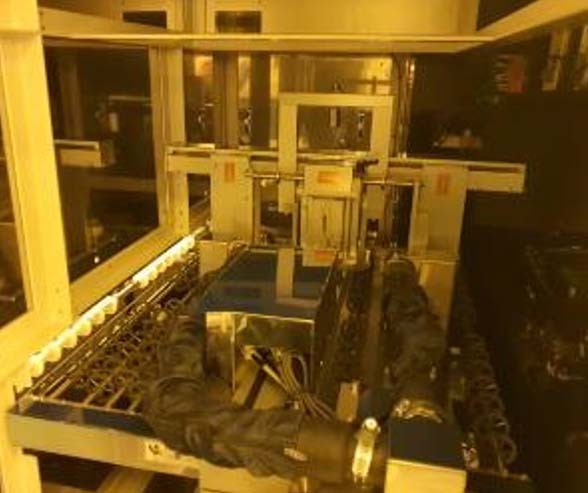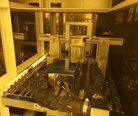Used ORC EDI-8010 #9376102 for sale
URL successfully copied!
Tap to zoom




ID: 9376102
Exposure system
CCD Camera
SR Resist
Upper stage
Inversion
Down stream
Clean rolls
Ejection unit
Gas: PN2
Power supply: 220 V, 60Hz, 3-Phase.
ORC EDI-8010 is an Exposure Equipment designed primarily for photochemical experiments. It is a UV-VIS irradiation unit with low energy level (below 90J/m2min) and a wide wavelength range (200-800nm). The system provides a means of exposing a substrate to carefully controlled spectral electromagnetic radiation for the purpose of research, development, or process control. EDI-8010 consists of a series of lamps, power supply, electronic timer, and a process chamber. The lamp is equipped with a quartz envelope that contains a tube of ammonia mixed with a non-radiative gas, either nitrogen or argon. The lamps produce a broad emission range from 200 to 800nm, but at a relatively low power output. The power supply provides adjustable power up to different wavelengths. Additionally, the timer has a 100 microsecond resolution, allowing for precise exposure times and repeatability of the exposure event. The process chamber is the main feature of ORC EDI-8010; it is an enclosed environment in which the substrate is exposed to various levels of electromagnetic radiation. EDI-8010 is designed with an active cooling unit to ensure a stable temperature for uniform exposure and thermal management. The entire machine is designed to minimize stray light by utilizing black anodize aluminum on its exterior surfaces. This helps to limit the amount of light transmitted into the process chamber. The unit also comes with a safety shutter that is designed to close when the tool is not in use, reducing the possibility of exposure due to accidental activation of the asset. ORC EDI-8010 is designed to meet rigorous standards of safety, efficiency, and precision. Its main purpose is to deliver a uniform dose of low-energy electromagnetic radiation in a controlled manner and monitor the effects of the exposure on a substrate. This model is suitable for a range of photochemical experiments, including but not limited to, photolithography, etching of thin films, development of contact lenses, and exposure of photoresists. Additionally, it can also be used in medical research and development applications, especially in the area of photodynamic therapy.
There are no reviews yet

